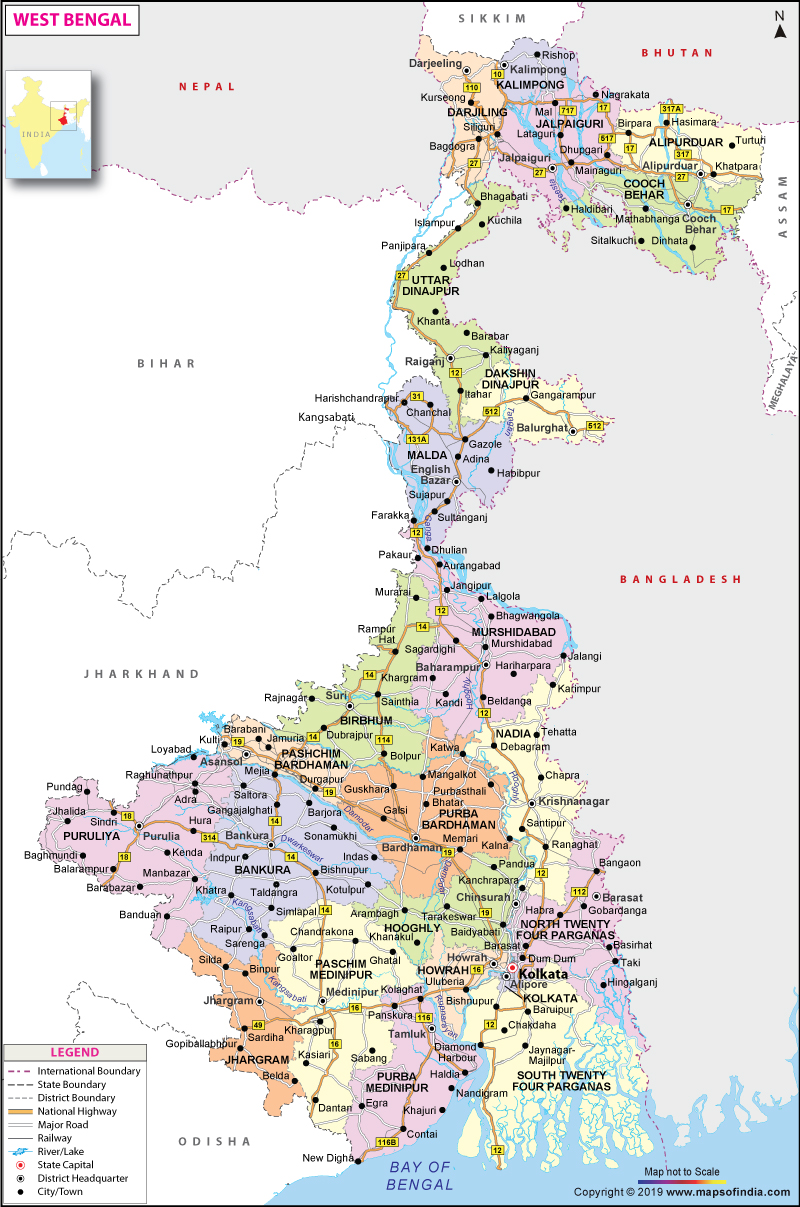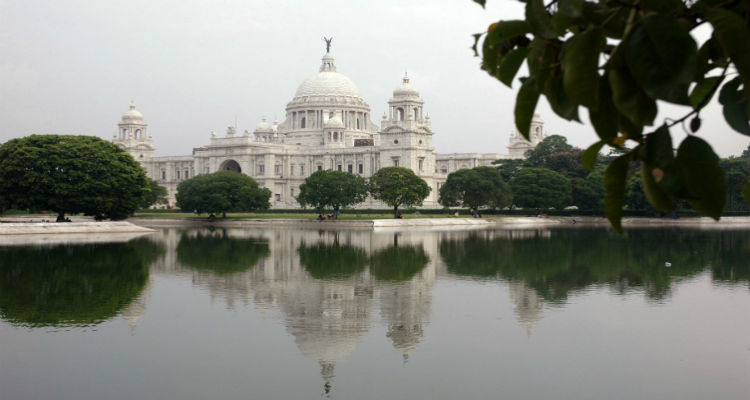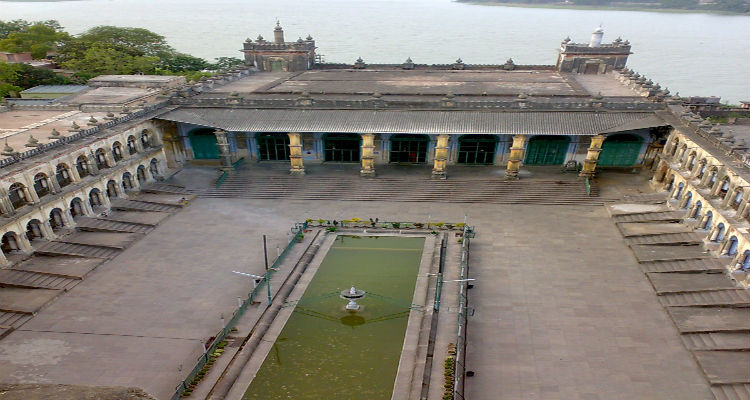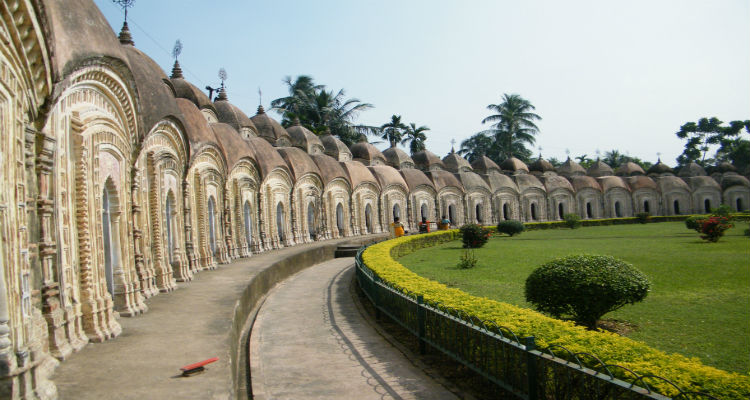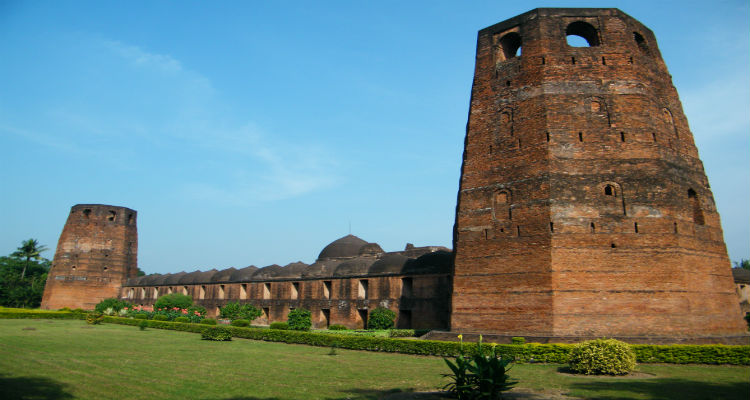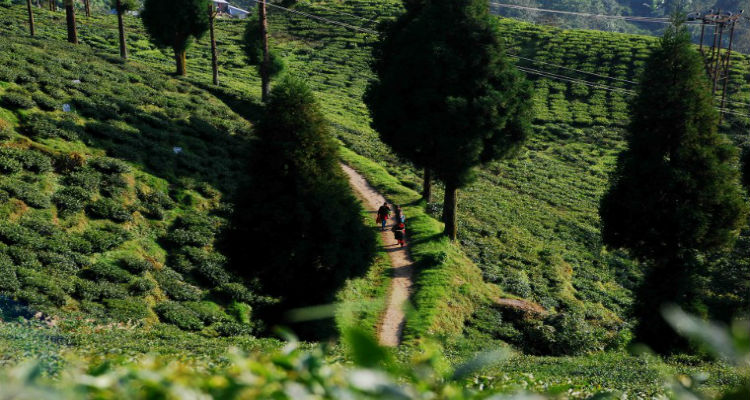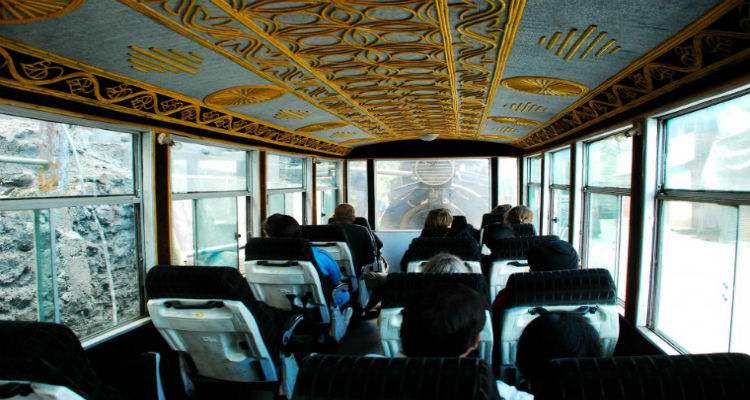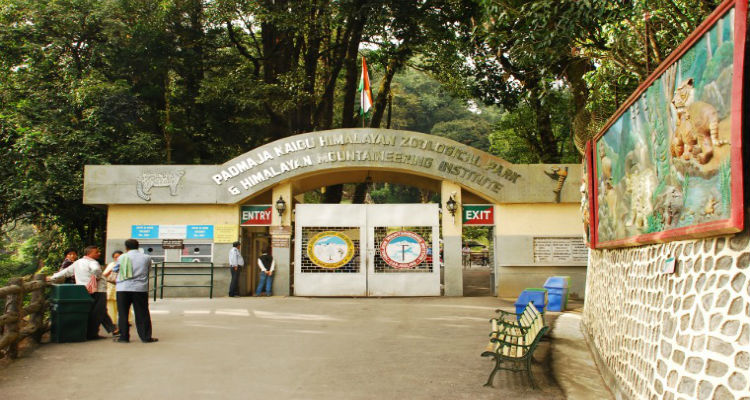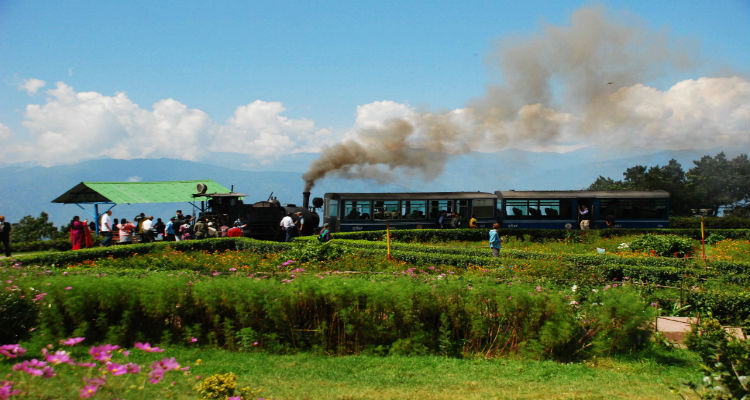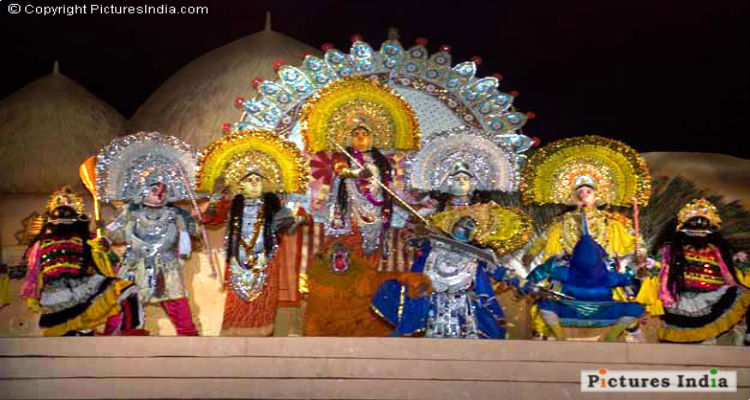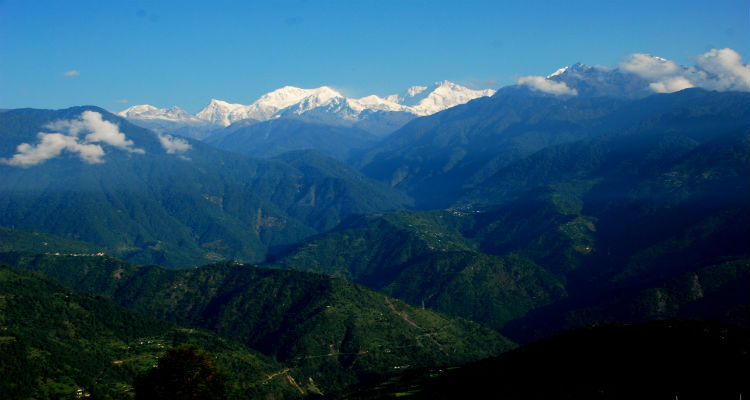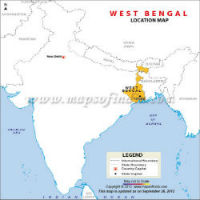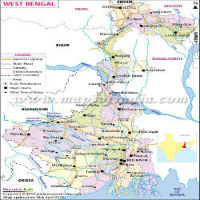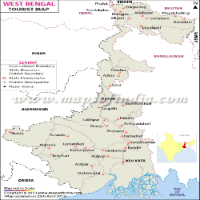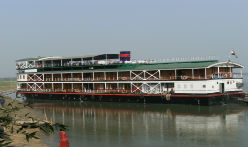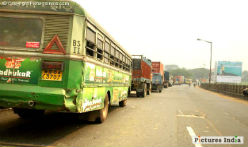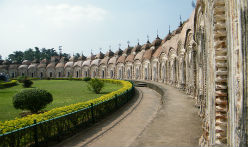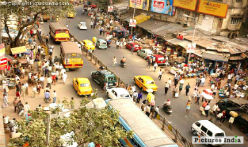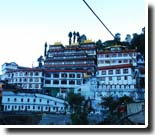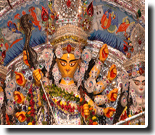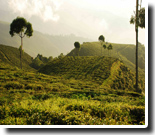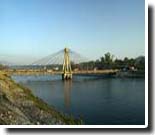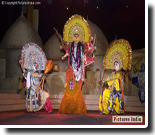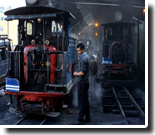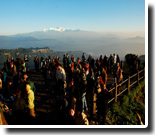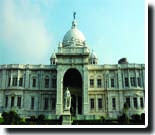-
 Places of Interest
Places of Interest -
 Travel Guide
Travel Guide -
 Route Maps
Route Maps -
 Important Places
Important Places -
 How To Reach
How To Reach
About West Bengal
West Bengal is located in the eastern part of India. It is bounded on its north by Bhutan and the state of Sikkim, on its east by Bangladesh, on its northeast by the state of Assam, on its south by the Bay of Bengal, on its southwest by the state of Odisha, on its northwest by Nepal, and on its west by the state of Bihar. The alluvial plain in the south is watered by the legendary River Hooghly and its tributaries - Mayurakshi, Damodar, Kangsabati and the Rupnarayan. The Himalayan north, comprising the districts of Darjeeling, Jalpaiguri and Cooch Behar are watered by the swift flowing rivers Teesta, Torsa, Jaldhaka and Ranjit. Variations in altitude result in diversity in the nature and climate of West Bengal. From the northern highlands at the feet of the Himalayas to the tropical forests of Sunderbans, West Bengal is a land of myriad beauty, each region different from the other.
Facts on West Bengal | |
|---|---|
| Official Website | www.westbengal.gov.in |
| Date of Formation | 26 January 1950 |
| Area | 88,752 sq km |
| Density | 1,000/km2 |
| Population (2011) | 9,13,47,736 |
| Males Population (2011) | 4,68,09,027 |
| Females Population (2011) | 4,44,67,088 |
| No. of District | 23 |
| Capital | Kolkata |
| Rivers | Hooghly, Teesta, Jaldhaka, Rupnarayan |
| Forests & National Park | Gorumara NP, Sundarbans NP, Ballavpur WS, Chapramari WS |
| Languages | Bengali, Hindi, English, Nepali |
| Neighbouring State | Assam, Sikkim, Bihar, Jharkhand, Odisha |
| State Animal | Fishing cat |
| State Bird | White-throated Kingfisher |
| State Tree | Devil Tree |
| State Flower | Night-flowering Jasmine |
| Net State Domestic Product (2011) | 48536 |
| Literacy Rate (2011) | 86.43% |
| Females per 1000 males | 947 |
| Assembly constituency | 294 |
| Parliamentary constituency | 42 |
West Bengal Facts
Although in area, West Bengal ranks 14th India, but it is one of the largest in population. The capital is Kolkata, India's third largest metropolitan city; other important cities and towns are Howrah, Asansol, Durgapur, Siliguri, Darjeeling, Kharagpur and Haldia. West Bengal has a single-chamber legislative assembly with 295 seats. The state sends 58 members to the Indian Parliament: 16 to the Rajya Sabha (Upper House) and 42 to the Lok Sabha (Lower House). Local government is based on 23 administrative districts.
West Bengal History
Bengal finds a coveted place even in pre-historic times. At the time of Alexander's invasion, a powerful kingdom called Gangaridai ruled over Bengal. Ascendancy of the Guptas and the Mauryas had somewhat little effect on Bengal. Later Sasanka became the king of Bengal and is said to have played an important role in the early half of the seventh century. He was succeeded by Gopala who founded the Pala dynasty which ruled for centuries and had created a huge empire. The Palas were followed by the Sena dynasty which was ended by Muslim rulers from Delhi. Bengal was ruled by various Muslim rulers and governors till the Mughal period in sixteenth century. More Details...
| Click to View large Map |
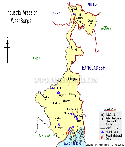 |
| West Bengal Industrial Map |
Economy and Infrastructure of West Bengal
Agriculture plays a pivotal role in the state's income, and nearly three out of four persons in the state are directly or indirectly involved in agriculture. The state accounts for high percentage of the country's jute production. It is also a major producer of tea. Important crops of the state include potatoes, oilseeds, betelvine, tobacco, wheat, barley and maize. The state also occupies a leading position among principal rice growing states of India. West Bengal has a significant mineral output, including dolomite, limestone, and china clay. It has steel plants, an automobile-manufacturing plant, and numerous chemical, machinery-building, and light-engineering industries. Here's a profile of the state's infrastructure:
| Roads | Surfaces - 25984 Km, Un-surfaced - 32016 Km, National Highways - 1631 Km |
| Railways | 3767 Km Eastern & South Eastern Railway Headquarters are in Kolkata. |
| Telecommunications | Basic Telephone - Working Lines - 797800 Waiting list - 150200 Express Demand - 1.4 per 100 population VSNL has its International Gateway and Earthstation in and around Kolkata. Mobile Cellular Services (GSM) is provided by Modi - Telstra and Usha Martin Telecom Malaysia within Greater Kolkata. Mobile Services proposed in the rest of the State by Reliance/NYNEX. Public Radio Paging Services provided by four operators E-mail Services available from a host of operators. |
| Airports | "Domestic: Bagdogra Airport, Siliguri |
| International: Netaji Subhas Chandra Bose International Airport, Kolkata " | |
| Major Ports | Kolkata, Haldia |
More Details...
West Bengal Geography
The geography of West Bengal is varied. The state is situated in the eastern part of India; on its east lies Bangladesh. Sikkim and Bhutan lie on the north of West Bengal. The state of Assam is situated on the northeast of West Bengal. Bihar and Jharkhand are situated on the western side of the state. The geographical location of the state is 23 degree North latitude and 88 degree East longitude. The total area of West Bengal is 88,752 sq km. According to the census of 2011, the state has a population of 91,347,736. The population density of West Bengal per square kilometer is 1000. Out of the total population of the state, the ratio between males and females is 947. The population of West Bengal is predominated by the Bengali population. But immigration from different states of India has enriched the population diversity of West Bengal. More Details...
West Bengal Government
In Bengal, CPI(M) (Communist Party of India – Marxist) came into power in 1977 under the leadership of Jyoti Basu and ruled in West Bengal for 34 years. In 2011, TMC (Trinamool Congress) led by Mamata Banerjee rose into power with 184 seats. And in 2019 general election, BJP (Bhartiya Janata Party) is slowly gaining its way to West Bengal with 18 seats. However, TMC won by 22 seats in the state respectively.
More Details...
West Bengal Judiciary
The state of West Bengal is blessed with a systematic and organised judiciary that helps in the quick delivery of justice. The highest court in the state is Calcutta High Court. There are other lower courts as well in the state. More Details...
Society and Culture of West Bengal
About three quarters of the population live in the villages. Of the different religions, Hinduism, with its substrata of castes and aboriginal tribes, claims the adherence of more than three-fourths of the population, most of the remainder being Muslim. West Bengal contains about 40 recognised communities of tribes- the better known among them being the Santals, Oraons, Munas, Lepchas, and Bhutias- that make up less than one-tenth of the total population. Bengali is the language of most of the people, with Hindi, Urdu, Nepali, and English as minority languages. English, however, is the language of administration and a lingua franca for business purposes. More Details...
Tourism in West Bengal
This state attracts tourists from all over the country. The diversified physical features of the place make West Bengal a favourable tourist destination. Be it mountains or lush green forests, sea beaches or places of worship, the state has all. West Bengal hill stations are one of the major attractions of this state. From the breathtaking views of Darjeeling to the quite retreats of Siliguri, from the stunning tea gardens to the woody forests, West Bengal hill stations have something for everyone. Some of these hill stations are also sites of historical and religious significance. But it is the tranquil and scenic beauty of the West Bengal's hill stations that attract the visitors from all over the world. Each hill station is different from the other and provides great opportunities for the visitors to lose themselves in the serene lap of nature. There are forests and valleys, picturesque settings and tranquil mountain walks. Some of West Bengal's hill stations are very old and date back to the ancient times of Indian history. They provide the perfect mountain experience to the visitors.
To name a few places which are worth visiting in this state are:
- Ayodhya Hill
- Bandel Church
- Cooch Behar Palace
- Curzon Gate
- Digha Beach
- Gandhi Ghat
- Indian Botanical Garden
- I. S. K. C. O. N. (International Society for Krishna Consciousness) Temple at Mayapur
- Kantanagar Temple
- Raiganj Bird Sanctuary
- Santiniketan
- Sunderbans National Park
- Gorumara National Park
>
Transportation
West Bengal is well-connected through different modes of transport. By road, the state is covered by about 92,000 km area through national highways and state highways. These roads connect the cities as well as small towns and villages of the state. West Bengal also has a well-linked railway network. The capital city of West Bengal, Kolkata, is the headquarter for three different zones of the Indian railways in the state - Eastern Railway, South Eastern Railway and the Kolkata Metro. It is easy to reach the state via airways. Kolkata's Netaji Subhas Chandra Bose International Airport at Dum Dum is the biggest airport of the state. Bagdogra Airport and Kazi Nazrul Islam International Airport are few other airports in the state. Much government-owned organisations run their bus services in the state. Besides these organisations, many private companies also operate their bus services in the state.
Education
The state government or the private organisations run schools in the state. The secondary schools are affiliated to West Bengal Board of Secondary Education, Central Board of Secondary Education (CBSE), Council for the Indian School Certificate Examinations (CISCE) and the National Institute of Open School (NIOS). There are many universities and affiliated colleges in the state. These universities offer courses in several fields such as arts, science, medical, technology, management etc. The state of West Bengal also has several well-established medical institutes like the Calcutta Medical College, Calcutta National Medical College and the North Bengal Dental College. Instructions in law are meted out to students in many colleges like Hazra Law College, South Calcutta Law College, Surendranath Law College and Jogeshchandra Chaudhuri Law College. Along with these, there are institutes of engineering and film studies.
Language
Bengali and English are the official languages of West Bengal. The National Language Hindi is also widely spoken in the state. The three subdivisions of the Darjeeling district have Nepali as their official language. Urdu, Oriya, Santali are some other languages spoken in the state. More Details...
West Bengal Media
In the modern world, newspapers are among the most easy and common ways to propagate information. West Bengal has over five hundred newspapers published daily, out of which over three hundred are in Bengali. The state owned television broadcaster is Doordarshan and the public radio station is All India Radio. Private FM stations are only available in Asansol, Kolkata and Siliguri. Newspapers of West Bengal generally publish current news of the state, nation and the world. The news published in these newspapers are about political, social, criminal, cultural, business, sports events. They also publish editorials, cartoons focusing on contemporary issues in a comic way and articles by eminent scholars. More Details...
Best Time to Visit
West Bengal experiences heavy rains during the monsoons and the summers are little scorching there. So the best time to be in the state is during the winter season between October and March.
MOI.AB.03.02.17
Last Updated on: June 01, 2021
West Bengal Route Maps
Famous Personalities of West Bengal
